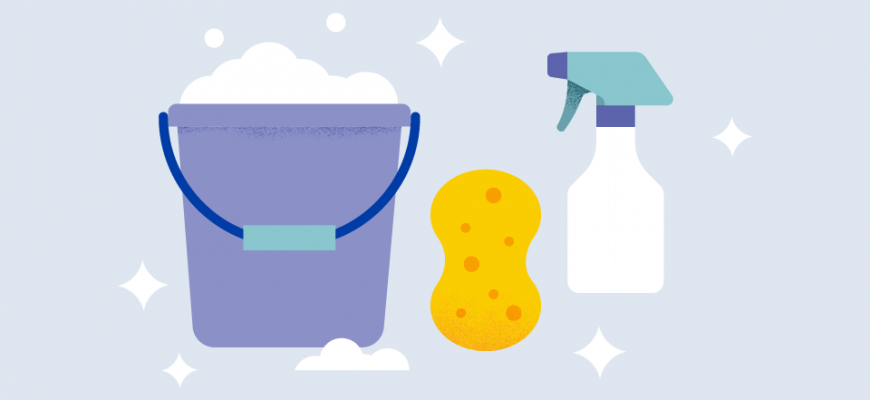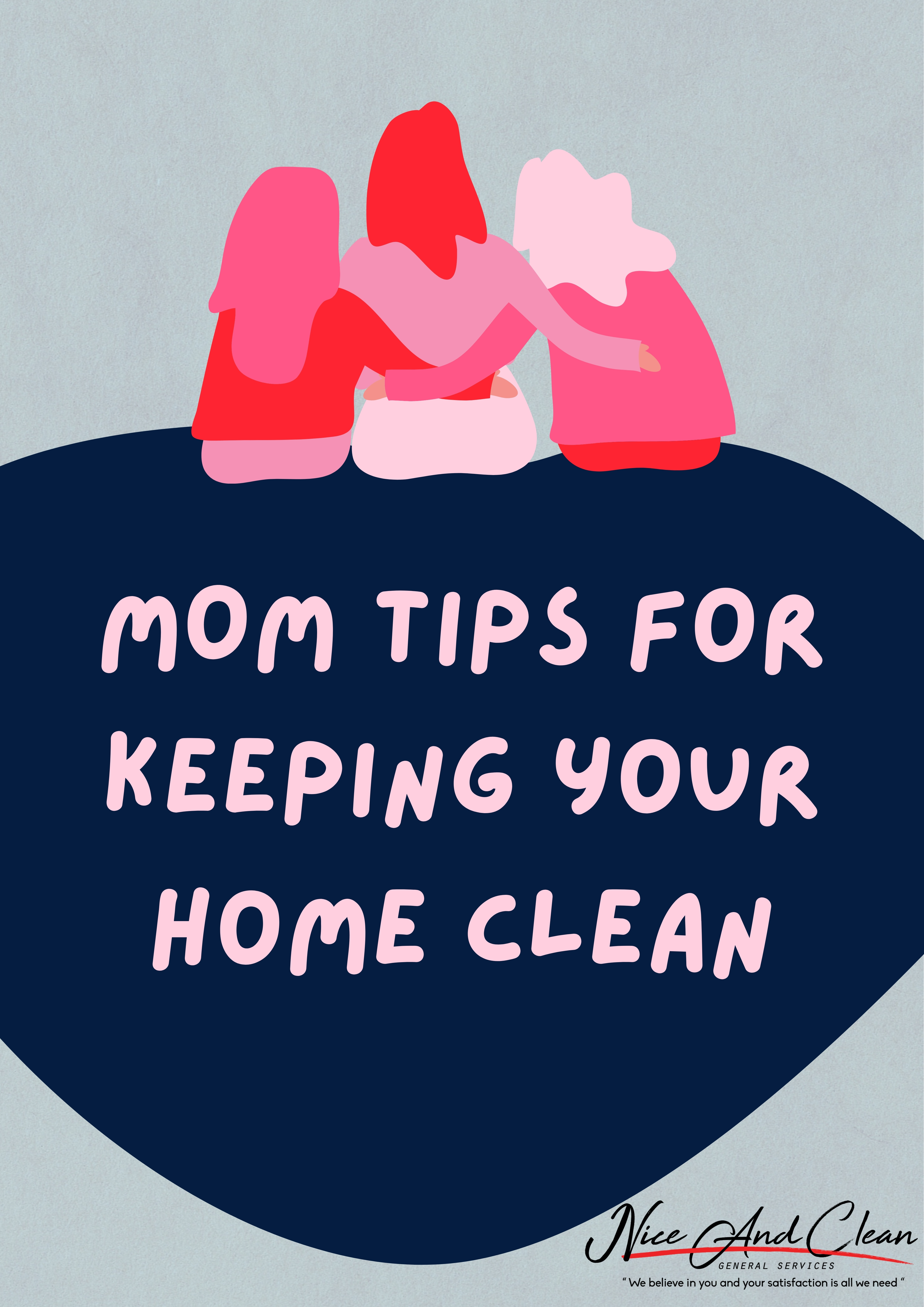Cleaning and Disinfecting Your Home
Can you catch the coronavirus disease (COVID-19) from food? How should I do laundry now? Mundane household tasks have turned into a source of uncertainty and anxiety as families grapple with getting the basics done all while keeping their loved ones safe and healthy. Widespread misinformation about the virus puts everyone at risk and adds to the stress of having to filter fact from fiction.
While research into the COVID-19 virus is ongoing, we know the virus is transmitted through direct contact with respiratory droplets of an infected person (through coughing and sneezing), and touching surfaces contaminated with the virus. The virus may survive on surfaces for a few hours up to several days. The good news? Simple disinfectants can kill it. Now what does this mean for your home?
To help you guys, we compiled the latest expert information on what is known about COVID-19 and tips to help keep it out of your home.
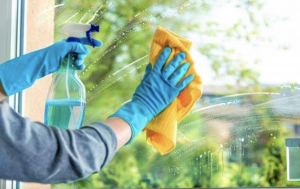
When and how to clean surfaces in your home
- Clean high-touch surfaces regularly (for example, daily) and after you have visitors in your home.
- Focus on high-touch surfaces such as doorknobs, tables, handles, light switches, and countertops.
- Clean other surfaces in your home when they are visibly dirty or as needed. Clean them more frequently if people in your household are more likely to get very sick from COVID-19. You might also choose to disinfect.
- Clean surfaces using a product suitable for each surface, following instructions on the product label.
Reduce contamination of surfaces
Take steps in your home to limit contamination of surfaces from airborne particles or from touching surfaces with contaminated hands.
- Ask visitors who are not fully vaccinated to wear masks.
- Follow guidance for people who are fully vaccinated before inviting visitors to your home.
- Isolate people who are sick with COVID-19.
- Have everyone in your household wash hands often, especially when returning from outside activities.
Simple hygiene measures can help protect your family’s health and everyone else’s.
Avoid touching your eyes, nose and mouth.
- Don’t cough or sneeze into your hands
Cover your mouth and nose with your elbow or tissue when coughing or sneezing. Dispose of used tissue immediately.
Maintain a distance of at least 1 meter (3 feet) from people who are coughing or sneezing.
- Wash, wash, wash your hands
Yes, you’re hearing it everywhere, because it’s the best line of defense. Wash hands frequently with soap and water for at least 20-30 seconds.
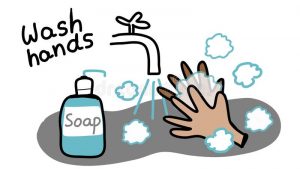
- When Someone is Sick : Disinfect safely
Disinfect your home when someone is sick or if someone who is positive for COVID-19 has been in your home within the last 24 hours. Disinfecting kills any remaining germs on surfaces and reduces the spread of germs. Keep disinfectants out of the reach of children.
How to disinfect
- ALWAYS follow the directions on the label.
- The label includes instructions on how to use the product and specific instructions to keep you safe. Keep disinfectants out of the reach of children. Check the label to find out what personal protective equipment (PPE) you need to use your product safely(such as gloves, glasses, or goggles).
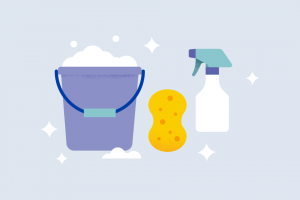
- Clean visibly dirty surfaces with household cleaners containing soap or detergent before disinfecting if your disinfectant product does not have a cleaning agent (check the label to verify).
- Use a disinfectant product that is effective against COVID-19.
- Read the label to make sure it meets your needs.
- If products effective against COVID-19 are not available, bleach solutions can be used if appropriate for the surface.
- Many products recommend keeping the surface wet with a disinfectant for a certain period of time (look at the “contact time” on the product label).
- Ensure adequate ventilation while using any disinfectant by keeping doors and windows open and using fans to help improve air flow.
- Immediately after disinfecting, wash your hands with soap and water for 20 seconds. Be sure to wash your hands immediately after removing gloves.
If soap and water are not available and hands are not visibly dirty, use hand sanitizer that contains at least 60% alcohol. If hands are visibly dirty, always wash hands with soap and water for at least 20 seconds.
Tips for using chemical disinfectants safely
- Always follow the directions on the label of cleaning and disinfection products to ensure safe and effective use. You may need to wear personal protective equipment, such as gloves, goggles, or glasses, depending on the directions on the product label.
- Ensure adequate ventilation (for example, open windows and run fans).
- Use only the amount recommended on the label.
- If diluting with water is indicated for use, use water at room temperature (unless stated otherwise on the label).
- Label diluted cleaning or disinfectant solutions.
- Store and use chemicals out of the reach of children and pets.
- Do not mix products or chemicals.
- Do not eat, drink, breathe, or inject cleaning and disinfection products into your body or apply directly to your skin as they can cause serious harm.
- Do not wipe or bathe people or pets with any surface cleaning and disinfection products.
- Special considerations should be made for people with asthma.
- Cleaning and Disinfecting Different kind of surfaces:
Soft surfaces
For soft surfaces such as carpet, rugs, and drapes
- Clean the soft surfaces (carpets, rugs, and drapes) with soap and water or with cleaners made for use on these surfaces.
- Launder items (if possible) using the warmest appropriate water setting and dry items completely.
- Vacuum as usual. If vacuuming an area occupied by a sick person or someone positive for COVID-19 in the last 24 hours, wear a mask when vacuuming.
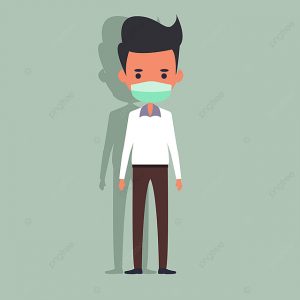
Laundry
- Use the warmest appropriate water setting and dry items completely.
- It is safe to wash dirty laundry from a person who is sick with other people’s items.
- If handling dirty laundry from a person who is sick, wear gloves and a mask.
- Clean clothes hampers or laundry baskets according to guidance for surfaces.
- Wash hands after handling dirty laundry.
Electronics
- Consider putting a wipe able cover on electronics (for example, phones, tablets, touchscreens, keyboards, and remote controls) to make cleaning easier.
- Follow the manufacturer’s instructions for cleaning the electronic device.
- Note that many of the products for electronics contain alcohol because it dries quickly.
